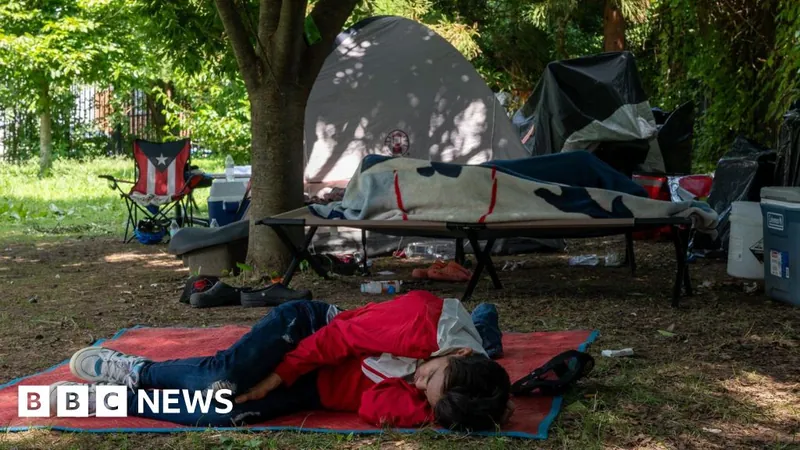
US Faces Alarming Surge in Homelessness as 2024 Sees Record Numbers
2024-12-29
Author: Benjamin
In an unprecedented crisis, the US homeless population has surged by over 18% in just one year, marking the highest levels of homelessness since the government began tracking these statistics in 2007. The report from the Department of Housing and Urban Development (HUD), released on a recent Friday, indicates that more than 770,000 individuals were found living in shelters, temporary housing, or on the streets during a single-night survey conducted in January 2024.
This drastic increase follows a 12% rise in the previous year, and experts warn that these numbers may be considerably underestimated, as they exclude individuals temporarily residing with friends or family. The crisis is largely attributed to skyrocketing housing costs, natural disasters, and a recent influx of migrants settling in major urban areas.
Family homelessness has seen a staggering 39% rise compared to the previous year, with 13 regions reporting more than double the number of families experiencing homelessness due to migration. In stark contrast, over 370 localities not affected by migration reported a significantly lower average increase of less than 8%.
Disturbingly, children under 18 represent the largest demographic impacted, with nearly 150,000 youths identified as homeless during the survey. The elderly population, specifically those aged 65 and above, also saw a 6% uptick in homelessness.
While the overall statistics paint a grim picture, there are some glimmers of hope. Homelessness among military veterans declined by 8%, reflecting a continued positive trend. Notably, cities like Los Angeles, facing some of the most exorbitant housing rates nationwide, reported a 5% reduction in homelessness—the first decrease observed in seven years. Similarly, Dallas has seen a 16% drop over the last two years, and Chester County, Pennsylvania, recorded an impressive 60% decrease over a five-year span, attributed to enhanced legal, educational, and affordable housing initiatives aimed at homeless migrant workers.
Local authorities have cited the increasing number of asylum seekers as contributing to the staggering figures. Thousands of migrants have been sent to Democratic-controlled cities like New York, Chicago, and Denver by Republican governors in Texas and Florida—a strategic political move that raised concerns over housing and resource allocation in already strained urban environments.
Contrastingly, the report indicates that unlawful crossings at the US border have dropped by more than 60% since January's homelessness count, with encounters reaching their lowest levels since July 2020. This reduction has prompted some cities to begin closing temporary migrant shelters.
The data gathered also reflects a turbulent housing market, with rent prices experiencing sharp increases prior to the survey. However, as of now, rents are stabilizing or even declining in numerous cities across the country.
Natural disasters have further exacerbated the rising homelessness rates. The count included over 5,200 individuals residing in emergency shelters in Hawaii following the devastating wildfires that swept through Maui in August 2023.
As the country confronts these alarming statistics, the combination of rising costs, natural calamities, and migration patterns present a complex challenge that requires immediate attention and sustainable solutions. The future requires cooperation among local authorities, policymakers, and the community to address the growing crisis of homelessness in America.
Stay informed, stay engaged—together we can make a difference!



 Brasil (PT)
Brasil (PT)
 Canada (EN)
Canada (EN)
 Chile (ES)
Chile (ES)
 Česko (CS)
Česko (CS)
 대한민국 (KO)
대한민국 (KO)
 España (ES)
España (ES)
 France (FR)
France (FR)
 Hong Kong (EN)
Hong Kong (EN)
 Italia (IT)
Italia (IT)
 日本 (JA)
日本 (JA)
 Magyarország (HU)
Magyarország (HU)
 Norge (NO)
Norge (NO)
 Polska (PL)
Polska (PL)
 Schweiz (DE)
Schweiz (DE)
 Singapore (EN)
Singapore (EN)
 Sverige (SV)
Sverige (SV)
 Suomi (FI)
Suomi (FI)
 Türkiye (TR)
Türkiye (TR)
 الإمارات العربية المتحدة (AR)
الإمارات العربية المتحدة (AR)